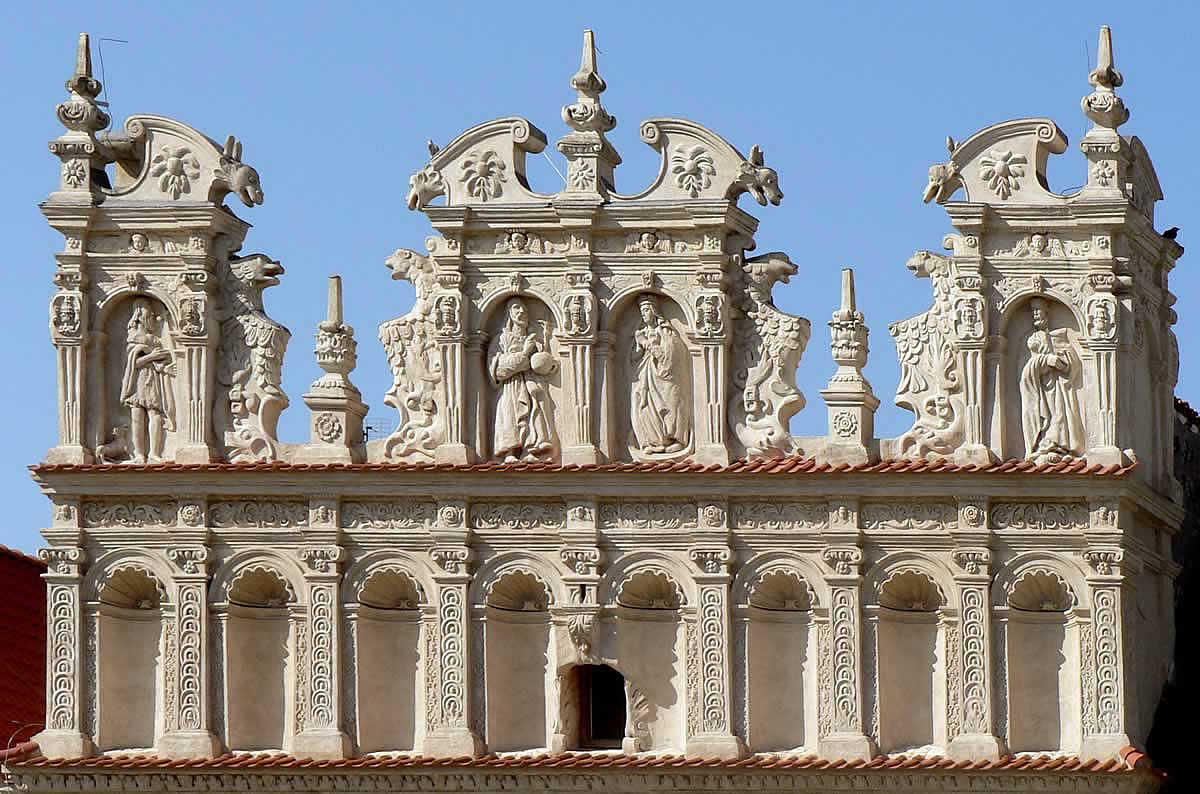 Manieryzm
Manieryzm
Manieryzm (uważany raczej za krótkotrwałą modę niż poważny styl w sztuce), bazujący na osiągnięciach renesansu, lecz odchodzący od zasady doskonałych proporcji i harmonii, w Krakowie znalazł swe odbicie przede wszystkim w przebudowie Sukiennic, dokonanej po połowie XVI w. przez Jana Padovano. Słynna attyka tej budowli z następującymi na przemian sterczynami i maszkaronami (groteskowymi transpozycjami ludzkich fizjonomii) stała się na długi czas wielokrotnie naśladowanym znamieniem polskiej architektury. W malarstwie spóźnionym manierystą okazał się Tomasz Dolabella, artysta przybyły pod koniec XVI w. z Wenecji, którego styl kształtował się w dużej mierze pod wpływem gustów polskiej klienteli. Zdeformowane postacie z jego płócien, uproszczona, schematyczna perspektywa, jak i sama treść, wiele mówiąca o ówczesnym polskim życiu, oraz panegiryczny charakter pozwalają śmiało zaliczyć go do prekursorów tzw. sztuki sarmackiej. W dziedzinie portretu wzorców dostarczały obrazy Marcina Kobera (np. portret Batorego z 1583 r.). Wyrazista charakterystyka twarzy, schematyzm ujęcia i oficjalna, reprezentacyjna forma przez długie dziesięciolecia powielane będą przez cechowych malarzy, utrafiających w gusta polskiej szlachty.